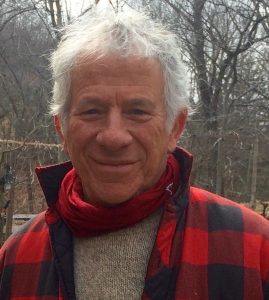1 Inner and Outer Peace

What We Mean When We Talk About Inner Peace
Peter Gould
In PAX 120B, we don’t hold up “Inner Peace” as some exalted state toward which we launch ourselves through a practice of mindful meditation. You’ll find several essays in this book that definitely lead you in a different direction.
The “Inner Peace” in our course works collaboratively with the Outer Peace process. Our premise is simple. We say:
If you, the student, intend to work in a field of conflict—to transform or resolve it;
If you’d like to put your energy into peacemaking, peacebuilding, peacekeeping;
If you want to be a mediator;
If you want to be a negotiator, an arbitrator, a justice or a judge;
If you want to assist an injured community in the difficult process of truth and reconciliation;
If you want to work with groups or non-profits organizing around issues of economic inequality, climate justice, immigration rights, domestic abuse, mass incarceration;
If you want to confront racism and privilege, or gender violence;
If you want to apply restorative practices to repair harm to victims and re-integrate offenders into their community;
If you want to dedicate your life to environmental stewardship;
If you want to take part in a non-violent activity of protest;
If you want to do public service or run for political office;
If you want clarity about the many layers of your own identity–some of which you may want to question;
Then we think you will want to develop some kind of dedicated mindfulness practice, a habit of time and space for yourself, so that you can bring your absolute best self to any one of these situations, and so that you can model calm, compassion, active listening, non-violent speech, deliberation, accurate vocabulary, and appropriate body language.
By grounding yourself in an Inner Peace practice of your own, you will bring to the table an ever-improving positive ethics of communication. You will inspire confidence in others.

What We Mean When We Talk About Outer Peace
John Ungerleider
In PAX 120B, “Outer Peace” is not the lack of conflict, but a way of dealing with the inevitable conflicts in life—between individuals and groups—without violence. This calls for respect and increasing equity between members of historically unequal identity groups.
The sensitivity, insight, and patience needed to take risks, to get to know someone who is both truly different as well as deeply similar to each of us, require inner as well as outer skills from a peacebuilder.
We need to build capacities for an active life of “Inner Peace:” cultivating an Inner Activism: shifting ways that we may be potentially violent, towards accessing abilities that can build the dimensions of Outer Peace.
We must understand how our cultures of violence seep into us collectively and individually—often unconsciously, against our better judgment or against our will. We can gain this awareness, together in dialogue and by personal reflection.
We can transform ourselves from intolerant, potential perpetrators of violence, into collaborators in liberating communication.
We can liberate ourselves increasingly from the gender-socialized stereotypes that house intolerance and oppression, of each other and of our human potential. We can overcome the alienation that comes from this and can lead to domestic violence and sexual abuse.
We can examine our emotions, so they become conscious to us, better enabling us to prevent unknown, unexpected aggressions from appearing. They may suddenly come up from attitudes, beliefs, and childhood abuses, up to the surface to be expressed in current relationships.
We can find a way to act with the integrity of who we are and who we want to be in building, making, and keeping peace between the colleagues and communities in our daily lives.
These skills for Outer Peace practice, from dialogue to mediation to negotiation to trust-building and team-building to conflict mapping and intervention, can be strengthened by self-reflection and a clear and honest analysis of our own inherited social identities.
